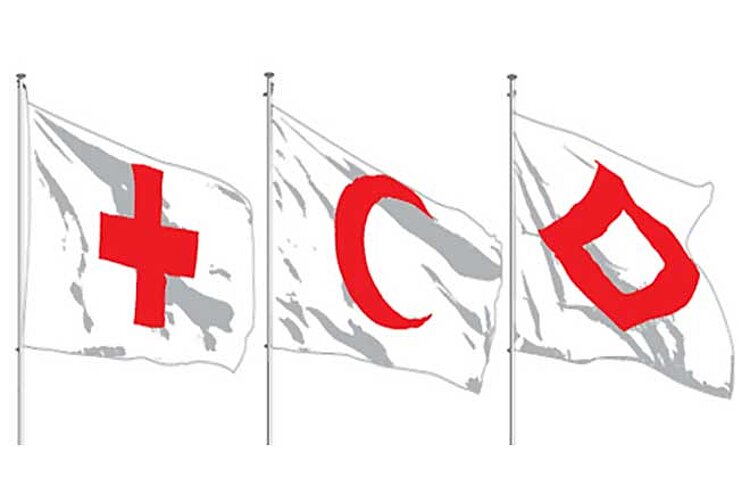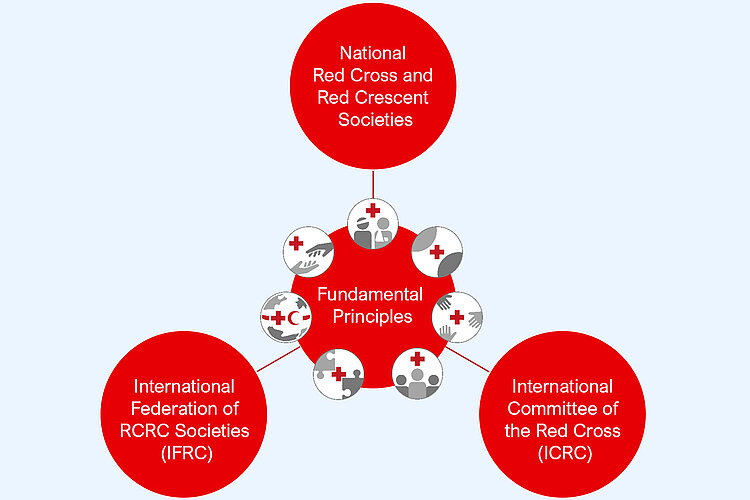
The International Red Cross and Red Crescent Movement
Humanity, impartiality, neutrality, independence, voluntariness, unity and universality: with these principles, millions of people give a face to the work of the Red Cross and Red Crescent in over 190 countries.
To ensure that their diverse help is possible every day and worldwide, the world's largest humanitarian movement is organized in a strong international network. The German Red Cross is part of the International Red Cross and Red Crescent Movement.
The International Red Cross and Red Crescent Movement consists of three components:
- the International Committee of the Red Cross (ICRC)
- the International Federation of the Red Cross and Red Crescent Societies (the International Federation)
- the national Red Crossand Red Crescent Societies
The respective mandates of these three components and the functions of their most important joint committees are set out in the Statutes of the Movement.

International Committee of the Red Cross
The founding body of the movement is the International Committee of the Red Cross (ICRC) with its headquarters in Geneva. The ICRC is a private, neutral and independent Swissorganisation with the humanitarian mission of engaging itself worldwide for the protection ofthe victims of armed conflicts.
It manages and coordinates international relief campaigns in armed conflicts, visits prisonersand organises a central tracing service. In the event of armed conflicts the ICRC appeals to theparties involved in the conflict to comply with the applicable law in order to ensure protectionof the parties not involved in the conflict and to observe the restrictions relating to the use ofarms and the methods of warfare. In addition, the ICRC plays a considerable role in thefurther development of international humanitarian law.

International Federation of Red Cross and Red Crescent Societies
The International Federation of Red Cross and Red Crescent Societies (International Federation) also has its headquarters in Geneva and is the umbrella organisation of the Red Cross and Red Crescent Societies.
It supports the development of national societies and the expansion of their services for the benefit of those most in need of help and protection. It coordinates the international aid of the national Red Cross and Red Crescent Societies in the event of natural and technical disasters and also promotes national disaster control programmes.

National Red Cross and Red Crescent Societies
In the year 2019, 192 national Red Cross and Red Crescent Societies all over the world put into practice the principles of the International Red Cross and Red Crescent Movement through their work.
National societies are recognised as being Voluntary Aid Societies ('auxiliaries to the public authorities') in their various countries. As such they perform a broad range of humanitarian tasks from emergency relief to health and social services. In case of need the national societies collaborate in the field of civil protection and support the regular medical services of the armed forces of their countries.
Internationally, the national societies provide humanitarian aid in armed conflicts and emergencies. They also promote family reunification by way of a worldwide tracing network.
The special legal status of the German Red Cross and the tasks that result from the Geneva Conventions and their Additional Protocols are regulated in Germany by a special act of law, the so-called GRC Act.

